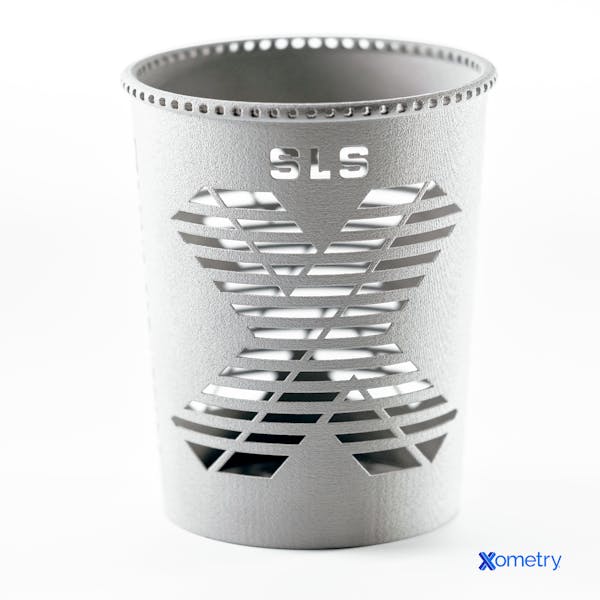Although polyamides and nylon are often referred to interchangeably, they’re not actually the same thing. The term “polyamides” refers to a group of materials with different properties and molecular structures, making them suitable for different uses. Nylon belongs to a subcategory called aliphatic polyamides. It might seem confusing, but don’t worry, we will take a deeper look into the comparison between polyamides and nylons and offer easy ways to identify each polymer. We will also look at their grades, break down their basic chemical structure, and list their mechanical properties.
What Are Polyamides?
Polyamides are synthetic or natural polymers. They are made up of amide groups that are repeated and interconnected by amide links. They have increased crystallinity, and thermal and chemical resistance due to the presence of hydrogen bonds. Polyamides generally have poor resistance to moisture absorption, but, on the upside, some have excellent tensile strength and impact resistance. Some examples of natural polyamides include wool, silk, collagen, and keratin. Synthetic polyamides can be broken down into three categories:
- Aliphatic Polyamides: This category also includes many grades of nylon such as Nylon 6 and Nylon 6/6.
- Aromatic Polyamides: Also known as aramids, this category is preferred by many Xometry users to create fibers such as Nomex (used in fire-resistant fabrics), and Kevlar (known for its use in the construction of bullet-resistant vests).
- Semi-Aromatic Polyamides: These high-performance engineering polymers, also known as polyphthalamides or PPA, have impressive high-temperature properties. Some of these include Rislan or Zytel, which is a material Xometry offers with its quick-turn injection molding service.

Molecular structure of polyamide 6.
The molecular structure of polyamides can vary greatly, i.e., aliphatic polyamides like Nylon are polymerized from monomers like caprolactam and hexamethylenediamine. Aromatic polyamides, on the other hand, are polymerized from para-phenylenediamine and terephthaloyl chloride.
Polyamides possess high tensile strength. Their name alone refers to a range of different materials, some of which can be woven into fibers, cast, or injection molded. Nylon 6, for example, is an aliphatic polyamide that has a tensile strength of about 40MPa. Kevlar 29 is an aromatic polyamide that has a tensile strength of 3600 MPa. This considerable difference is because of the huge range of materials in the polyamide group.
Uses of Polyamides
Depending on the subcategory of materials, each polyamide will have different uses and applications. Here are some examples:
- Kevlar: This is a popular material that is often woven into bullet-resistant vests and used to reinforce tires.
- Nomex: Due to its outstanding thermal resistance properties, Nomex is a go-to material for workwear and fire-resistant suits.
- Nylon: An extremely popular and equally versatile material, Nylon can be spun into a fiber and injection molded. Some examples of where Nylon might be used include gear wheels and rope. It is also one of the most commonly 3D printed materials at Xometry via our SLS and MJF processes which primarily utilize Nylon materials.
- Wool: Another favorite, wool is used in the production of clothing, furniture, carpets, and other household goods.
How to Identify Polyamides
The best way to identify a polyamide is by using a datasheet, but if there isn’t one available, the next best thing would be to send a sample to a lab for destructive testing. It’s almost impossible to use the naked eye to identify a polyamide, as they typically include such a wide range of different materials. A factor that makes visual identification even harder, is the fact that polyamides have no distinctive visual characteristics. Furthermore, they can either be stranded or molded.
Speaking of molded polyamides, some, like Nylon, are typically thermoplastics. This means that when heated up to a certain temperature, they will soften, and then become solid again when cooled down. Other polyamides like Nomex, though, have really high-temperature resistance. Some are even classified as thermosets, which means they’re impossible to test by thermal testing.
Another way to potentially identify a polyamide is by calculating its density. This method, however, may not be precise enough to fully determine the grade of the polyamide. A further identification method could be property testing. If one decides to go down this route, the samples would need to be prepared and tested according to the latest and most relevant standards, allowing the comparison with supplier values to be accurate and precise.
What is Nylon?
Nylon is a trade name that was given to a group of aliphatic polyamides by the chemical company DuPont. Due to its high tensile strength, tough nature, and wear resistance, it has become one of the most popular engineering thermoplastics today and a common choice among Xometry customers. Like other thermoplastics, Nylon can be melted and formed to make parts using high heat in processes like injection molding, extrusion, and 3D printing as shown in the below image.

A pen holder 3D-printed in Nylon by Xometry.
There are various grades of nylon, some of which can be formed into fabrics. Not all grades share the same molecular structures and polymerization techniques. Nylon is typically considered an amorphous polymer, but it can have a degree of crystallinity. Aliphatic polyamides are more popular than aromatic and semi-aromatic polyamides, and the most common types of nylon are Nylon 6/6 and Nylon 6.
Get Instant Pricing on Custom Nylon Parts
Composition and Uses of Nylon
Nylon is an aliphatic polyamide that can be made from various materials and chemistries. Nylon 6 is made from caprolactam, while Nylon 6/6 is produced from hexamethylene and diamine/adipic acid. Some other nylon types, though, like Nylon 11, which we offer via selective laser sintering, can be made from renewable sources like castor bean plants by polymerizing undecanoic acid.
The numbering scheme for nylon can help with understanding the amount of carbon atoms in each reactant. For example, Nylon 6/6 indicates that there are six carbon atoms in the diamine and six carbon atoms in the diacid, while Nylon 6 is only made up of a single polymer that has six carbon atoms. For more information on this topic, feel free to check out our guide on the properties of nylon. Nylon is one of the strongest engineering plastics in the world. In addition to its high lubricity, it has great tensile strength and impact strength. Depending on the grade, nylon can have a tensile strength of between 40 MPa and 90 MPa. Often used in injection molding, Nylon 6/6 has a tensile strength of 85 MPa. Higher tensile strength variants are possible using filler materials, such as with our glass-filled nylon option, which reinforces the material and improves strength.
Nylon is used pretty much everywhere, from gears and ropes to textiles and parachutes, thanks to its wear resistance, tensile strength, chemical resistance, and great strength-to-weight ratio. Some Xometry users report opting for nylon as a lightweight alternative to metal.
How to Identify Nylon
Like other polyamides, the best way to identify nylon is to use a datasheet or send a sample to a lab for destructive testing. Nylon doesn’t have any distinguishing visual properties, so without using specialized techniques or equipment, it can be very difficult to identify. For instance, nylon can be quite smooth to the touch, but then again, so are other polymers like PTFE. Another way to potentially identify if a material belongs to the nylon category is by testing its melting point or density, but this won’t provide enough information to determine which grade of nylon the material belongs to. Some nylon grades are even created by blending other grades together, making them even harder to identify. This is why sending a sample to a lab will prove to be the best option.
Differences Between Polyamides and Nylons
Simply put, nylons are a type of polyamide. Although they don’t make up an entire class of polymer, they are lower in cost, easier to process, and have a better balance of properties compared to aromatic and semi-aromatic polyamides. Unlike aromatic polyamides, or aramids for short, which have higher thermal resistance and tensile strength, nylon is the most common polyamide and is widely used across several sectors.
Are Polyamides Breathable?
Yes, polyamides are breathable. They’re often used to create various fabrics that are also breathable, like stockings, and undergarments.
Is Nylon a Polyamide?
Yes, nylon is a polyamide. Nylon is a trading name given to a specific class of aliphatic polyamides.
Xometry provides a wide range of manufacturing capabilities including nylon 3D printing services for all of your prototyping and production needs. Visit our website to learn more or to request an instant quote on nylon 3D printing and more.
Copyright and Trademark Notices
- Kevlar®, Nomex®, Zytel®, and Rislan® are trademarks of DUPONT SAFETY & CONSTRUCTION, INC. CORPORATION.
Disclaimer
The content appearing on this webpage is for informational purposes only. Xometry makes no representation or warranty of any kind, be it expressed or implied, as to the accuracy, completeness, or validity of the information. Any performance parameters, geometric tolerances, specific design features, quality and types of materials, or processes should not be inferred to represent what will be delivered by third-party suppliers or manufacturers through Xometry’s network. Buyers seeking quotes for parts are responsible for defining the specific requirements for those parts. Please refer to our terms and conditions for more information.


